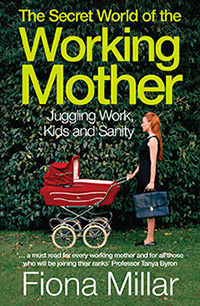Why Justin Welby is right about faith admissions
The Archbishop of Canterbury made an important statement yesterday. Church schools, he said, may be moving away from faith based entry tests and opening their doors to a wider group of pupils than is currently the case.
His comments were swiftly toned down. But it was too late – intentionally or not, the Archbishop had let the cat out of the bag and drawn attention to a sticky and often uncomfortable issue for the church.
Amidst all the heat generated by the coalition free schools and academies, and the part they play in a fair education system, the steep hierarchy of schools that pre-existed the academies movement is often overlooked. The role of the private and grammar schools has been well aired this week following Sir John Major’s comments about social mobility.
But the role played by faith schools, their impact on parent choice and social cohesion, is frequently ignored. Many faith schools are inclusive and play an important part in their local communities, others aren’t.
In the past two years, important research projects by both the Guardian and the BHA has flagged up the extent to which faith schools either shut out poorer children, or contribute to racial segregation.
Often this is done by using the freedoms they have been given on admissions plus a series of convoluted “faith tests” that enable them to trawl a much wider area for their applicants, effectively socially selecting the pupils most likely to succeed and ensuring that their success is a self-fulfilling prophesy.
It is not unusual to see admissions policies for faith schools that run to five or six pages and end with a complex cocktail of points being allocated for religious attendance, “tasks” such as flower arranging, bell ringing and, in the case of one school I looked at recently, cleaning the church.
Add in parish catchment areas, tests of aptitude or to band pupils into ability groups, and the application process seems like an endurance course to challenge all but the most dogged and determined families, which is of course the point.
Justin Welby’s comments come almost exactly ten years since I wrote my first piece for the Guardian on school admissions. Since then there have been serial attempts by government to try and make the system fairer- although in every instance without really having the courage to take on the big beasts of the selection and faith schools lobbies.
And in small ways things have changed. New academies and free schools are not permitted to have total faith admissions so we are now seeing a trickle of new schools sponsored by faith groups that are either open to all, or operate 50% open admissions.
The admissions code has been tightened up; more people are eligible to make complaints and the Office of the Schools Adjudicator (the body that investigates complaints) has been strengthened, although the recent challenge to an OSA ruling on faith admissions by the London Oratory School is worrying. As Justin Welby’s later watering down of his comments reminded us, it isn’t actually the church leadership that dictates in these matters, but the governing bodies of the individual schools who have a vested interest in performing well in today’s competitive schools market.
But essentially this is tinkering around the edges. In most areas of British life, discrimination on the grounds of faith is unacceptable, just as it is on the grounds of race and gender. Yet schools can routinely refuse entry to children due to membership of a religious group because admissions to faith schools are exempt from the equalities legislation.
The Archbishop also reminded us yesterday that his church has been an integral part of delivering education in this country since long before a coherent state system came into being. That is correct. But until that loophole in the law is closed, whether the church leaders like it or not, some schools will take advantage of it, their schools will prosper, the hierarchy will continue and the English school system will remain more segregated than it could or should be.
An edited version of this article appeared on Comment is Free in November 2103




